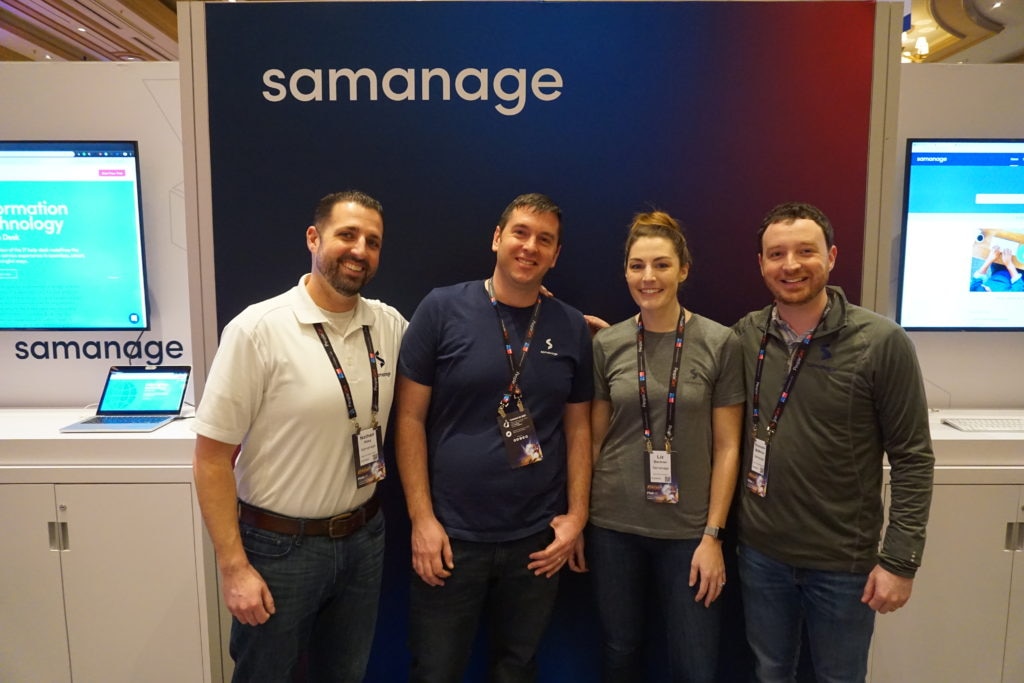This week, our team set out for Las Vegas and the Pink19 IT Service Management Conference and Exhibition. After a week of thought-leadership sessions, philosophical discussions with IT leaders from around the world, and, yes, a little blackjack, we wanted to catch you up on an eventful conference. Here are the highlights:
ITIL 4 is Here
Leading the festivities at this year’s Pink Elephant conference was an update to the most popular IT service delivery framework. What should you know about ITIL 4?
Well, first, there are training and certification programs available now. Pink Elephant and Axelos each have more information on how to get started with your training.
ITIL 4 updates focus on a higher level of business value, bring a successful framework from previous ITIL editions and expanding a focus on operations as they relate to digital transformation, business integrations, and relationships with agile, DevOps, and lean.
Don’t worry! Your ITIL v3 education and certifications are still relevant. The foundation of the framework is intact. The authors continue to preach best practices for incident, problem, change, and release management in the day-to-day functions of IT service.
The updates are designed to take a more holistic line of thinking toward business technology and the ways in which the IT department can contribute to larger business goals, breaking down silos, and creating a strategy that can easily scale. Speaking of which...
Build to Scale
This theme popped up repeatedly in speaking sessions and conversations in the exhibition showcase. It’s a simple question that applies to service delivery processes, tools, and IT strategy: “How can it scale?”
When you consider the furious pace at which technology and expectations evolve, it’s no wonder everyone is asking. Our team addressed this question with two of our speaking sessions.
[gallery columns="2" link="none" size="medium" ids="17498,17497"]
In our first session, solutions consultant Liz Beckner encouraged IT leaders to focus on the employee experience. In order to maximize the value of your service management strategy, you’ll need to provide an experience that enables employees to do their jobs efficiently. Specifically, this means expanding the service catalog beyond IT to promote a single service platform, enabling every service provider with an ability to deploy automated workflows, and measuring successes through CSAT. As your service catalog scales, there are creative ways to ensure that you are meeting your employees where they work with suggestions for services, making your job easier as a service provider and their lives easier as requesters. She’ll cover a number of these strategies in our upcoming webinar.
Second, our product marketing manager, Brendan Cooper, provided an in-depth look at how artificial intelligence is simplifying the experience for both employees and service providers. Just as your ride sharing apps have solved transportation problems that you didn’t even know you had, smart technology in your service desk can revolutionize the experience with a few simple benefits. From assisted data entry, to suggested solutions, to smart service catalog items, artificial intelligence can learn from all of the service data in your system to lead employees and service providers exactly where they need to go. That means that as your service catalog and knowledge base expand, so will the smart technology that’s driving a better experience for your employees.
Perception of IT vs. Expectation of IT
One of the more interesting presentations came from Mark Clark, Vice President and CIO of Corning Incorporated. He spoke about the necessity for IT to elevate its strategy to focus on larger business goals, emphasizing value-added services over a project-based mentality. He noticed a glaring difference between the way his organization viewed IT and the performance demands from leadership, framing the perception against the expectation:
| Perceptions |
Expectations |
| High cost vs. value delivered |
Competitive cost, high value |
| Slow organizational pace |
Keep pace with the business |
| Legacy capabilities |
Innovation |
| Reactive |
Proactive / strategic |
To start changing those perceptions and meeting expectations, Clark had a few recommendations that worked for Corning:
- Measure IT cost against revenue, and compare it to your industry — Face it, cost matters. While you need to deliver value to the business, that value will always be viewed in the context of what you’re spending. If your business is growing, you don’t necessarily need to cut costs; you can rearrange your investments without spending any more or less, but your cost ratio will decrease as the business revenue grows.
- Listen to internal customers — Your organizational leadership and employees outside of IT depend on technology and services to grow the business. If your processes and services don’t work for them, then they don’t work for the business. There is significant value in enablement, and their satisfaction will reflect IT’s efforts.
- Focus your transformation on three areas:
-
- Efficiency - Create automated workflows and processes that directly impact employee productivity.
- Agility - Use the cloud and focus your spending on technology that can scale and evolve.
- Insight - There’s data everywhere in the organization. Use it to drive automation, measure success, and improve performance.
It can take time, Clark says, but in alignment with some of the new themes in ITIL 4, this focus on business value is what the modern organization is demanding from IT. He did offer one more key piece of advice: as you find areas to cut your IT costs, insist that the money is reinvested into IT. This is a healthy compromise for improving the business value of IT without incurring extra costs, and in the long run, decreasing the IT spend in relation to company revenue.
Admiral McRaven Delivers Powerful Keynote
On Monday morning, Admiral William McRaven (organizer of the operation to capture Osama bin Laden) delivered a powerful keynote on the topics of teamwork, adversity, toughness, and ownership.
Admiral McRaven described in great detail the way his Navy Seal training shaped his outlook on life. One memorable exercise featured a team of trainees getting a rubber raft into tumultuous water and rowing a few miles into the ocean. The team, as McRaven described, needed to operate in lockstep from the way they carried the raft, to the way they boarded the raft, to the synchronized rowing that would make the difference between successfully navigating the waves and capsizing.
He recalls this training during times of physical and mental adversity throughout his life, insisting that you can only get so far on your own. The biggest, strongest, smartest, and most athletic Seals would flip their rafts instantly if any member of the team deviated from the group direction. This lesson, he says, though not specific to the content of Pink19, can apply to everyone in any area of their lives, which left most of the audience thinking critically about how their operations succeed or fail as a result of their teams’ abilities to work together.
The message was applicable, in numerous ways, to the themes of the conference. After spending time at presentations and talking with IT leaders for three straight days, we all left thinking about larger goals. No matter how advanced the technology or how intelligent a CIO, your IT departments and service management strategies are measured first and foremost by their contributions to business success. It’s time to expand the view of the IT department to encompass the goals of the team, or company, as a whole.
We look forward to another year of helping our partners achieve those goals!
[gallery size="medium" ids="17501,17502,17504"]




